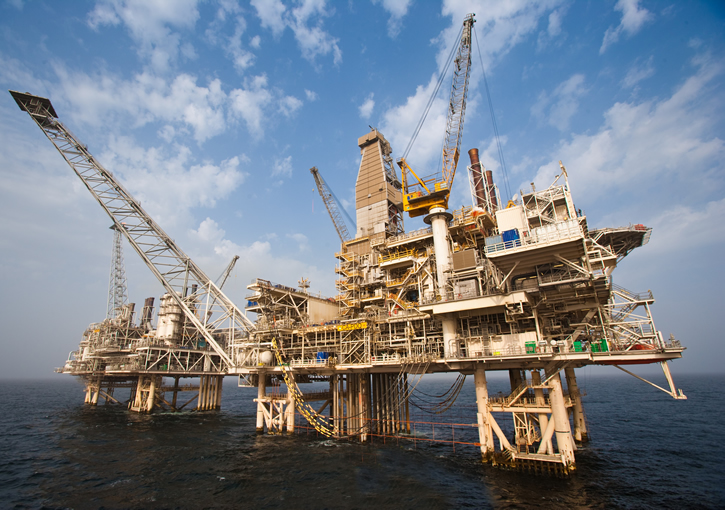In the development process of oil fields, people need to know specific information about the stability and state of the fluid in the well during the production or injection process, which requires the use of oil logging. Its reliability is crucial, and old-fashioned electronic based sensors cannot work in harsh underground environments such as high temperature, high pressure, corrosion, and geomagnetic and electrical interference. Fiber optic sensors can overcome these difficulties. They are insensitive to electromagnetic interference and can withstand extreme conditions, involving high temperatures, high pressures (tens of megapascals or above), as well as strong impacts and vibrations. They can accurately measure environmental parameters of the wellbore and well site. Synchronous, fiber optic sensors have distributed measurement capabilities and can measure the spatial distribution of the measured area, providing profile information. Moreover, the fiber optic sensor has a small cross-sectional area, a short shape, and occupies very little space in the wellbore.

Research progress of fiber optic sensors in logging
1. Reservoir parameter monitoring (1) Pressure monitoring
Due to the need for development plans, special caution should be exercised in managing reservoir pressure. The purpose of doing so is to reduce the loss of crude oil caused by extraction below the bubble point pressure, and to minimize the loss of crude oil caused by overpressure in the reservoir squeezing into the aquifer during gas injection. The sensors used for old-fashioned underground pressure monitoring include strain gauges and quartz crystal pressure gauges. Strain gauges are affected by temperature and hysteresis, while quartz pressure gauges are affected by rapid changes in temperature and pressure. When monitoring pressure, these sensors also involve difficulties in installation and poor long-term stability. Underground fiber optic sensors lack advantages such as underground electronic circuits, ease of installation, small size, and strong anti-interference ability, which are exactly what underground monitoring requires.
(2) Temperature monitoring
Distributed fiber optic temperature sensors have the potential to provide a new way to monitor production and oil reservoirs by continuously collecting temperature data along the entire completion length. Due to the variation of the temperature profile of the well, it can be compared with other surface collected data (such as flow rate, water content, wellhead pressure, etc.) and open hole logging curves, providing operators with qualitative and quantitative information about the current changes underground. Old style temperature measuring tools can only measure the temperature of a certain point at any given interval. To test the entire range of temperature, point sensors can only be moved back and forth in the well, inevitably affecting the balance of the well environment. The advantage of fiber optic distributed temperature sensors is that the fiber optic does not have to move back and forth within the detection area, and can The temperature equilibrium state inside the well is not affected. And because the optical fiber is placed inside the capillary steel pipe, fiber distributed temperature sensor testing can be carried out wherever the capillary steel pipe can reach. One of the fiber optic sensors widely used in underground monitoring applications is the Raman backscatter distributed temperature detector, which has been widely used in measuring wellbore temperature profiles (especially in steam drive wells). Distributed temperature sensors need to comprehensively consider the number of measurement points and connector attenuation. The problems encountered and solutions are:
a. The problem of signal attenuation caused by optical fibers and connectors can be solved by minimizing the number of connectors, using Bragg grating sensors, and improving the performance of connectors;
b. It is easy to be damaged during underground installation, and solutions include equipping skilled workers, requiring an external protective layer for fiber optic sensors, and reducing stress (involving stress caused by perforation and temperature). For fiber optic distributed temperature sensor systems, Sensa UK has always been in a technological priority, with a series of products launched and partnerships with major oil companies to actively explore the application of fiber optic distributed temperature sensors in underground oil wells. CiDRA company has also been researching fiber optic temperature sensors. Currently, the technical specifications of the company's temperature sensors are: measurement range 0 ℃~175 ℃, * * * degree soil 1 ℃, discrimination rate 0.1 ℃, long-term stability soil 1 ℃/vr (continuous use at 150 ℃). One of the major shortcomings of current fiber optic temperature and pressure sensors is the cross sensitivity of temperature and pressure. How to eliminate or apply this cross sensitivity is a hot research topic.
(3) Multiphase flow monitoring
In order to do well in reservoir monitoring and oilfield management, the core link is to obtain stable and reliable total flow profiles of production wells and injection wells, as well as the holdup of fluids in each phase. However, most oil wells are produced in layers, with different water contents in each layer and sometimes high flow rates, which makes it difficult to measure and analyze the production status of oil wells using conventional production logging equipment. A huge difficulty has arisen. The frictional resistance of liquid in the tubing and the injection from the reservoir into the wellbore make it impossible for differential pressure density instruments to measure, and electronic probes cannot detect small oil bubbles in the liquid. There are two measures for measuring multiphase flow using optical fibers. * * * is a gas holdup fiber optic sensor developed by Schlumberger in the United States, which can directly measure the gas holdup in multiphase flow. Its four optical fiber probes are evenly distributed in the cross section of the wellbore, and its spatial orientation can be measured by an integrated relative orientation sensor * * *. In the gas-liquid mixture, the gas holdup and the number of foam can be determined by the optical signal reflected by the probe (these two are related to the gas flow). In addition, using the measurement values of each probe to establish an image of gas flow in a well, these image data are particularly suitable for inclined and horizontal wells, which can better understand multiphase flow patterns and explain the inherent phase separation of these flow patterns under inclined conditions. Recently, this instrument has been used in Logging experiments have been successfully conducted in various regions. It provides information that can directly determine and quantify gases and liquids in multiphase mixtures, diagnose wellbore problems, and aid in production regulation. The instrument has passed on-site testing in three wells. The second method is to determine the phase composition of two-phase mixed flow by measuring the sound velocity. Due to the correlation between the sound velocity of the mixed fluid and the sound velocity and density of each single-phase fluid, this correlation is commonly found in two-phase gas/liquid and liquid/liquid mixed fluid systems, and synchronization is also applicable to multiphase mixed flow systems. Based on the sound velocity of the mixed fluid, the volume fraction of each phase of the fluid is determined, which is to measure the volume fraction of each single-phase flow through the flowmeter (i.e., holdup measurement). The consistency of a certain * * * body is equal to the flow volume fraction of that phase, depending on whether there is a serious slip phenomenon of that phase relative to other phases. For oil-water two-phase mixed flow systems without severe slippage, a uniform flow model can be used for analysis. For flow states with severe slippage, more The slippage model is used to explain the data measured by the flow meter in order to accurately formulate the flow rates for each phase. According to the flow cycle experiment, for oil-water mixed fluids, the long wavelength sound velocity measurement of the flowmeter can determine the volume fraction (i.e. holdup) of each phase, without being affected by flow heterogeneity (such as laminar flow).
2. Sound wave measurement
Compared to the past, exploration and development companies now face greater risks and more complex drilling environments, so obtaining * * * stratigraphic structure maps and reservoir mechanisms is of great significance. The seismic measurement measures currently in use, such as towed floating cable detectors, temporary seabed deployment of seismic detectors, and underground cable deployment of seismic detectors, can provide measurements of the target oil production area. However, these measures have relatively high operating costs and cannot be lowered into the well or limited by environmental conditions. The images provided by the target are not comprehensive and sustainable, and the discrimination rate is not very high, It is difficult to achieve continuous real-time dynamic monitoring of oil reservoirs. Based on the fiber optic downhole seismic detector system, these problems can be solved. It can provide high-definition four-dimensional reservoir images throughout the entire lifespan of the oil well, greatly facilitating reservoir management. This type of underground seismic acceleration detection
The wave sensor can receive seismic waves and solve them into images of the formation and fluid front*** Underground fiber optic 3-component seismic measurement has high agility and directionality, which can generate high-precision spatial images. It can not only provide near wellbore images, but also images of the surrounding strata of the wellbore. In some cases, the measurement range can reach several thousand feet. It operates throughout the entire lifespan of the oil well and can withstand harsh environmental conditions (temperatures up to 175 ℃ and pressures up to 100MPa), without movable components or downhole electronic devices. It is enclosed in a protective casing with a diameter of 2.5cm and can withstand strong impacts and vibrations. It can be installed in complex completion strings and small spaces. In addition, the system also has the characteristics of large dynamic range and wide signal frequency band, with a signal frequency band width of 3Hz~800Hz, which can record equivalent responses from very low to very high frequencies.
3. Laser fiber nuclear logging technology
Laser technology and fiber optic technology can be used to develop downhole sensors for logging in wells filled with non transparent fluids such as crude oil and mud. The research on laser fiber optic nuclear sensors is quite popular abroad, with a large number of related research papers in countries such as the United States, Germany, Russia, and Belgium. Laser fiber optic nuclear sensors are based on fiber optic communication and fiber optic sensors. They utilize physical effects such as photoinduced loss and photoluminescence, and have more advantages than conventional nuclear detectors. They are a typical interdisciplinary field. Fiber optic nuclear logging technology, in fact, is a nuclear detection technology in specific environments, and its typical advantages are:
(1) Sensitive probes can be developed for different energy levels in nuclear detection.
(2) Due to the application of photoluminescence effect, the probe can be located kilometers underground, while the photomultiplier tube is connected by a propagation optical cable and placed on the well, far away from the harsh underground environment (high temperature and high pressure), thereby extending its service life.
(3) Fiber optic has the ability to propagate at high speed and large capacity, and can also carry signals from other downhole instruments. However, laser fiber nuclear detectors also have defects, such as high temperature and high pressure resistant protective coatings, mechanical strength of propagation optical cables, and low attenuation loss of radiation resistant propagation optical cables.


